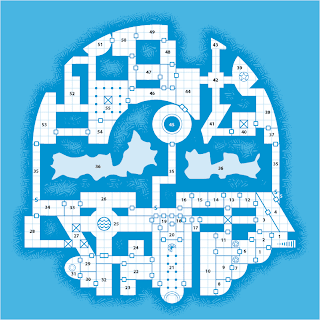Today is the feast of one of my favorite saints — St. Basil the Great. He is one of those few people in the history of the world where the monicker "Great" doesn't do the man justice. He was extremely well-educated, having studied at Athens — one of the great centers of learning in the ancient world. I think a lot of so-called intellectuals today would be surprised at how well-educated and intelligent St. Basil is, especially given our culture's current assumption that being religious is equivalent to being ignorant. St. Basil used all of his education and talent to come to a very
reasoned belief in Christ.
One of my favorite stories about St. Basil demonstrates how he personifies what a bishop
should be:
St. Basil was the bishop of Caesarea in Cappadocia. During the latter part of the 4th century, Emperor Valens was putting pressure on church hierarchs to accept
Arianism — one of the great Christian heresies. He sent the prefect Modestus to threaten the bishop. St. Basil's response is wonderful:
If you take away my possessions, you will not enrich yourself, nor will you make me a pauper. You have no need of my old worn-out clothing, nor of my few books, of which the entirety of my wealth is comprised. Exile means nothing to me, since I am bound to no particular place. This place in which I now dwell is not mine, and any place you send me shall not be mine. Better to say: every place is God's. Where would I be neither a stranger and sojourner? Who can torture me? I am so weak, that the very first blow would render me insensible. Death would be a kindness to me, for it will bring me all the sooner to God, for Whom I live and labor, and to Whom I hasten.
When the stunned Modestus replied that no one had ever spoken to him with such audacity, St. Basil informed him:
Perhaps, that is because you've never spoken to a bishop before. In all else we are meek, the most humble of all. But when it concerns God, and people rise up against Him, then we, counting everything else as naught, look to Him alone. Then fire, sword, wild beasts and iron rods that rend the body, serve to fill us with joy, rather than fear.
Emperor Valens left him alone.
One of my goals in starting this blog was to demonstrate that religion and RPGs can not only coexist but speak to and bolster each other. I am not sure why, but largely absent from our hobby is an understanding that religious belief can be a very rich source for adventure, conflict and character motivation. The life of St. Basil is a prime example. He was caught in the middle of the theological storm of Arianism in the tumultuous fourth century. People suffered and died over the issue.
What I find ironic is that we have played D&D for
decades with belief systems hard-wired into the game. Yet it still escapes us that
alignments represent the historic reality exemplified by the life of St. Basil that
beliefs matter. In fact, many of us have been actively trying to get rid of the alignment system for years.
I, myself, have struggled with
alignment and am no fan of the AD&D alignment system; however, if we took the time to hardwire
religious theology into the alignment system it could not only answer my own (and others) long-standing conundrum of what to do with D&D's systemic reliance on alignment (
cf. Protection from Evil), but add a layer of realistic flavor to our gaming experience.
Instead of the secular understanding of Law vs. Chaos as found in the DMG (which I have always found lacking), we can add a level of meaty realism with the very basic assumption that Law = Christian civilization and Chaos = demonic wilderness. From here we can further add to the realism by breaking down Law and Chaos into various assumed theologies.
Gnosticism, for example, would be a Chaotic alignment because it sees created matter as demonic. Salvation cannot come through society, civilization or the taming of the wilderness. It only comes through
knowledge. This opens up all kinds of possibilities for NPCs (mad wizards), monster races (illithids) and the adventures that could surround them.
To take an example directly from the life of St. Basil, Arianism would be a Lawful alignment, because it firmly upheld the belief in Empire. Since Christ is not of one essence with God the Father, but only of one
will, salvation is not found in God's being, but rather in subjecting oneself to the will of God. Thus, it is a faith that easily supports authoritarian states, where salvation is found in doing the will of those in positions of power and who represent the will of God. Again, this breathes life into entire
civilizations, let alone NPCs.
What I really like about this idea is that understanding alignment in context of theology actually gives players a lot of wiggle room — it isn't nearly as restrictive as the AD&D alignment system. Concepts like salvation through knowledge, will and being allow for a much broader range of behavior. This kind of freedom not only allows for a much meatier campaign world, but also usually means more fun.









